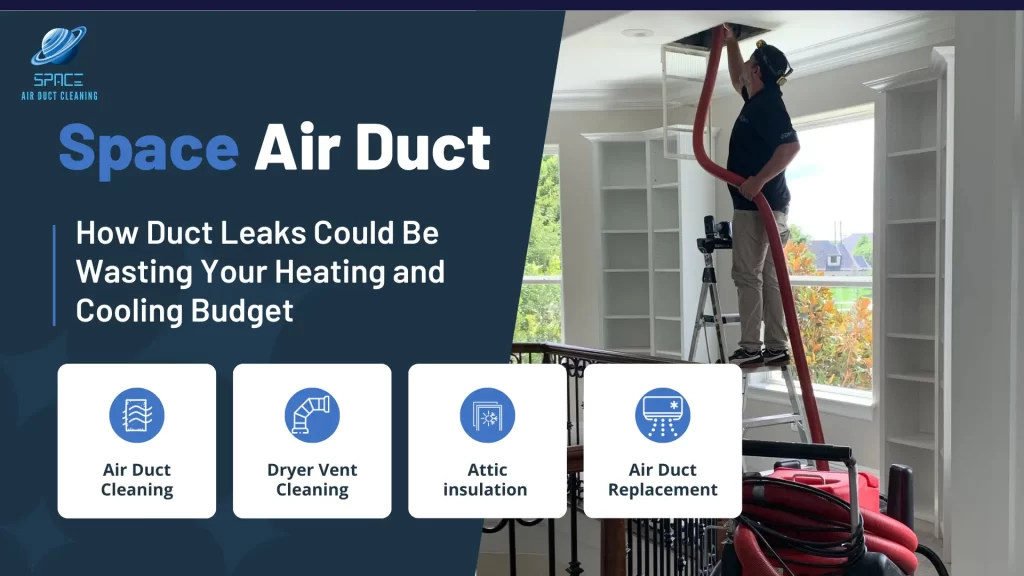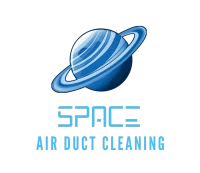If your utility bill keeps creeping up even though you have not changed the thermostat, leaky ducts are a likely culprit. Ducts move heated or cooled air from your HVAC system to every room. When gaps, loose fittings, or thin, aging seams let air escape into attics, basements, crawlspaces, or behind walls, you pay to condition spaces no one uses. The system then runs longer to hit the set temperature, which means more energy, more wear on equipment, and less comfort for the people in the building.
For local homeowners, that might look like a family room that never feels right on hot afternoons. For businesses, it often shows up as hot and cold spots across open offices, a draft at the front counter, or employees adjusting space heaters and fans to cope. The good news is that duct leaks are fixable, and sealing them usually delivers fast savings.
Why duct leaks hit your wallet so hard
Air is lazy, it takes the easiest path. When leaks open in your ductwork, conditioned air bleeds out into places that do not matter for comfort. Your thermostat senses that the rooms are still off target, so the system cycles longer. Longer run times raise energy use and grind down parts like blower motors, capacitors, and compressors. That aging shows up later as repair calls or early replacement.
Leaks also pull unfiltered air into the system. Return duct gaps in a dusty attic, for example, bring in insulation fibers and fine debris that clog filters and coat evaporator coils. Dirty coils transfer heat poorly, so your unit works even harder. In restaurants and shops, that can mean uncomfortable guests, reduced employee productivity, and higher operating costs. In warehouses or clinics, uneven temperatures can affect materials or sensitive equipment. Either way, you pay for the same comfort twice, once on the bill and again in maintenance.
How pros test for leaks and what you can check yourself
A thorough duct evaluation starts with a simple question: where is the air going before it reaches the room? Technicians use tools to answer that. At home or at work, you can do a quick check, then decide if it makes sense to bring in a team.
What you can do now
- Look for visible gaps or disconnected sections near the air handler, plenum, and the first few feet of supply and return ducts.
- Feel for air movement around seams while the system runs. A light tissue can show a flutter where air escapes.
- Check for dirty streaks along duct joints, which often mark leak paths.
- Replace clogged filters, then note if airflow improves at problem registers.
- Make sure supply registers are open and not blocked by furniture or boxes.
What technicians add to the picture
Pros pressure test the duct system to measure total leakage, then trace problem areas with specialized equipment. They inspect flex duct bends, crushed runs, poorly sealed takeoffs, and loose boot connections at the ceiling or wall. On commercial sites, they also review airflow balance, damper settings, and zoning controls. The result is a clear map of where you are losing air, with a plan to stop the waste.
Fixes that work, from smart sealing to targeted upgrades
Not all leaks are equal. A good repair plan matches the fix to the problem so you get the most benefit for your budget.
- Professional duct sealing uses mastic and approved tapes that stay tight through temperature swings. Sealing the plenum, takeoffs, and boots delivers a big share of the savings.
- Aeroseal style internal sealing can target leaks deep in the system when access is limited, helpful in finished spaces or complex commercial runs.
- Insulation upgrades keep sealed ducts from picking up heat in summer and losing it in winter. This is especially valuable for attic or rooftop runs.
- Duct repairs or short replacements make sense when sections are crushed, undersized, or kinked. Straightening the path restores airflow and reduces static pressure.
- System balancing and damper adjustments even out room temperatures, which improves comfort once leaks are sealed.
- Register and grille updates can reduce noise and improve throw, a simple change that boosts perceived comfort.
Alongside sealing, many property owners pair air duct cleaning with removing accumulated dust from years of leakage. Clean ducts help keep coils clear and indoor air fresher. If your equipment is older or struggling, a tune-up with coil cleaning, blower wheel cleaning, and refrigerant checks protects the investment you just made in the duct system.
Prevent leaks from coming back with routine care
Duct systems do not need constant attention, but a little prevention goes a long way. Schedule periodic inspections, especially after any roofing, remodeling, or tenant build-out work that might disturb duct runs. Replace filters on a set cadence so dust does not load up the system. Keep storage away from exposed ducts so boxes do not crush flexible runs. For businesses, consider a maintenance plan that includes seasonal checks, airflow verification, and cleaning of rooftop units. Keeping the system clean and tight supports better indoor air quality and steadier comfort for customers and staff.
This is also a good time to think about improvements that support a tighter duct system. Attic insulation top-offs reduce heat gain around sealed ducts. Smart thermostats help manage run times, keep schedules consistent, and generate reports that flag unusual energy use. UV lights or air purification upgrades keep coils and air cleaner, which helps airflow stay strong. If your return duct is undersized, a return air upgrade can drop static pressure, which lowers strain on the blower and helps every room feel more even.
When leaks hurt business operations
Comfort is not just a luxury in commercial spaces. In a retail store, uncomfortable customers do not linger. In a restaurant, hot zones near the kitchen and cool zones near windows lead to uneven seating and complaints. In offices, drafts and stuffy areas affect focus and morale. In clinics, consistent temperatures can be part of compliance and patient comfort. Duct leaks strike at the heart of these concerns. Sealing and balancing protect the guest experience, support health standards, and keep operations predictable.
For multi-tenant buildings, sealed ducts reduce odors traveling between suites and help each tenant’s meter reflect their actual use. Property managers appreciate the reduction in after hours hot or cold calls and the fewer emergency visits that follow. Over time, lower run hours also extend equipment life, which smooths capital planning.
Services that pair well with duct sealing
When you address leaks, it is wise to fix related issues that amplify results. These services are often part of the same visit or scheduled soon after:
- Air duct cleaning to remove dust that leaks pulled into the system
- Dryer vent cleaning to boost safety and airflow for laundry areas
- Evaporator and condenser coil cleaning for efficient heat transfer
- Blower motor and wheel cleaning to restore designed airflow
- Attic insulation upgrades to protect sealed ducts from heat gain
- HVAC tune-ups and filter programs to keep everything running smoothly
- Duct replacement for damaged sections where sealing alone is not enough
Each of these adds a layer of protection for your energy budget, comfort, and indoor air quality.
Ready to stop the waste? Here is the next step
If your home or business shows the signs above, do not wait for the next utility bill to confirm the problem. Book a duct assessment today. We will inspect the accessible runs, test for leakage, and outline a clear plan. You will see what is happening, why it matters, and exactly how we will fix it. Most sealing projects are quick, and the comfort change is immediate. Pair the visit with air duct cleaning, coil cleaning, or a tune-up to lock in the gains and keep the system in top shape.
Call or message now to schedule a visit, ask about same-week appointments, and get a quote. If you manage multiple properties, ask about commercial maintenance plans that keep every location efficient and comfortable all year.

